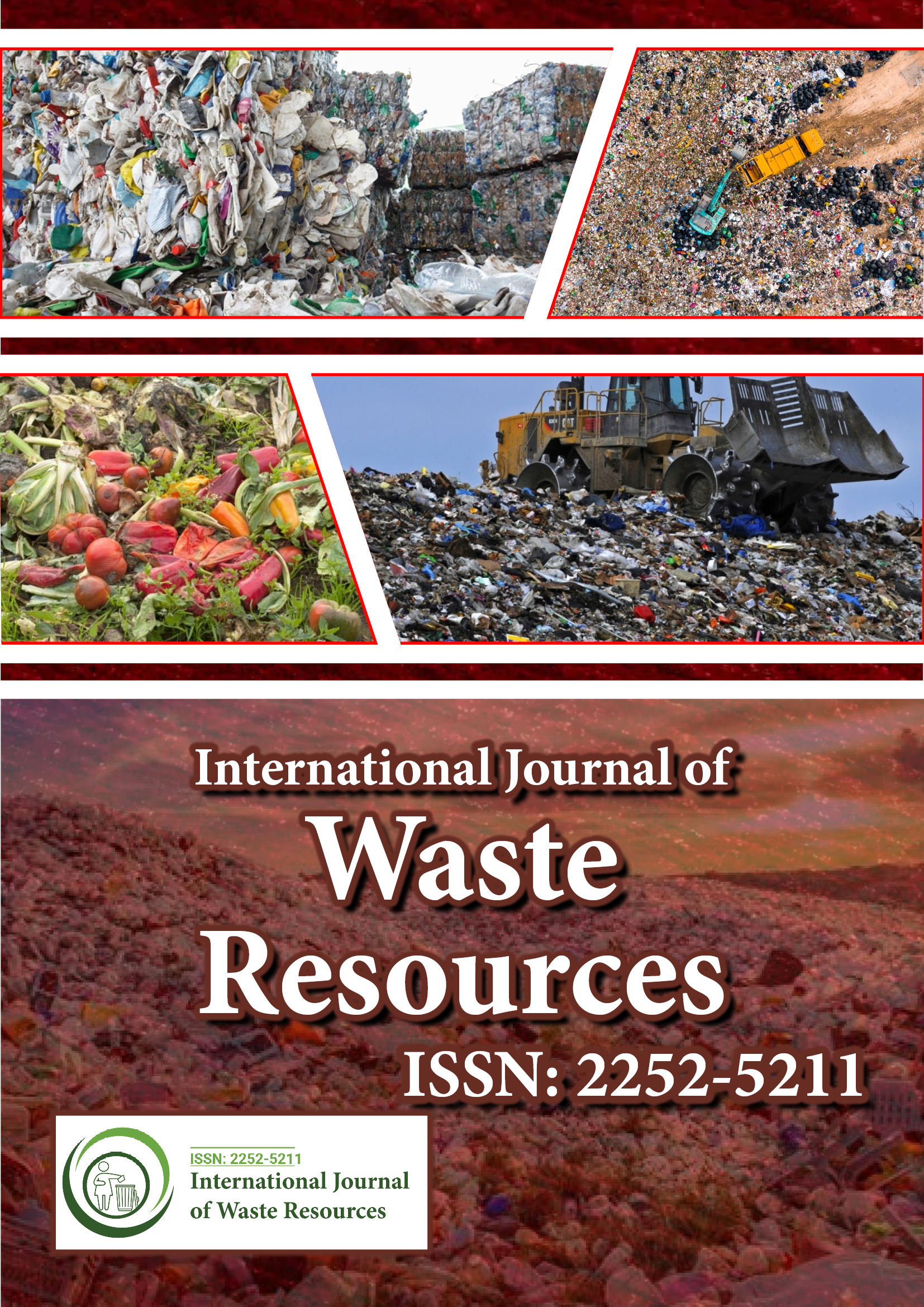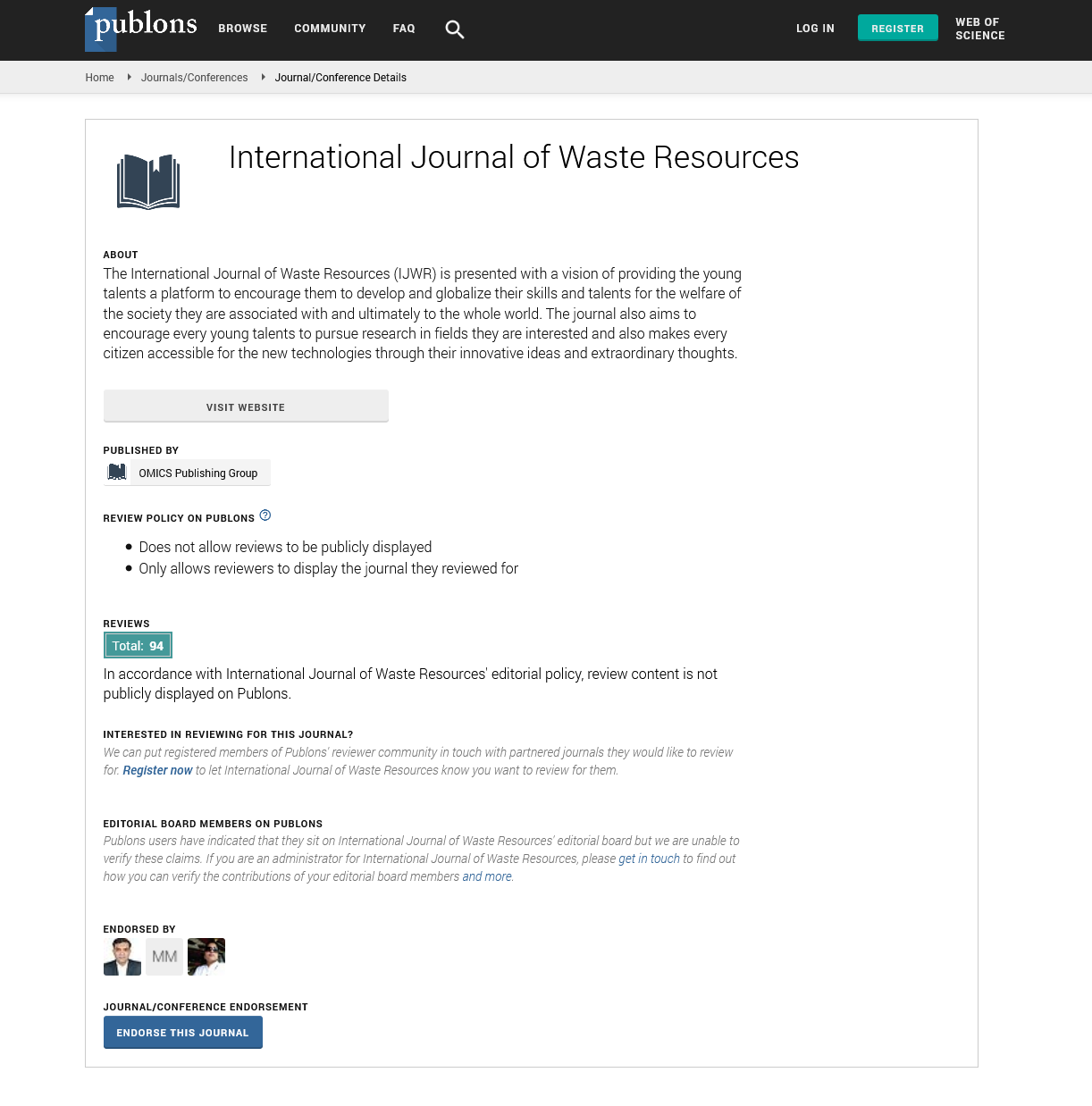Indexed In
- Open J Gate
- The Global Impact Factor (GIF)
- Open Archive Initiative
- VieSearch
- International Society of Universal Research in Sciences
- China National Knowledge Infrastructure (CNKI)
- CiteFactor
- Scimago
- Ulrich's Periodicals Directory
- Electronic Journals Library
- RefSeek
- Directory of Research Journal Indexing (DRJI)
- Hamdard University
- EBSCO A-Z
- Publons
- Google Scholar
Useful Links
Share This Page
Journal Flyer

Open Access Journals
- Agri and Aquaculture
- Biochemistry
- Bioinformatics & Systems Biology
- Business & Management
- Chemistry
- Clinical Sciences
- Engineering
- Food & Nutrition
- General Science
- Genetics & Molecular Biology
- Immunology & Microbiology
- Medical Sciences
- Neuroscience & Psychology
- Nursing & Health Care
- Pharmaceutical Sciences
Prospective - (2025) Volume 15, Issue 2
Hazardous Waste: Identification, Sources, Risks, Management Strategies, and Environmental Impact
Brijesh Kumar*Received: 30-Apr-2025, Manuscript No. IJWR-25-29436; Editor assigned: 02-May-2025, Pre QC No. IJWR-25-29436; Reviewed: 16-May-2025, QC No. IJWR-25-29436; Revised: 23-May-2025, Manuscript No. IJWR-25-29436; Published: 30-May-2025, DOI: 10.35248/2252-5211.25.15.619
Description
Hazardous waste refers to any waste material that poses substantial or potential threats to public health or the environment due to its toxic, reactive, flammable, corrosive, or infectious properties. Generated from a wide range of sources including industrial manufacturing, medical facilities, agriculture, laboratories and households, hazardous waste requires special handling, treatment and disposal methods to ensure environmental safety and human health protection. With the advancement of industrial and chemical processes, hazardous waste generation has significantly increased, making its management a critical component of modern environmental and public health policy.
Hazardous waste is generally classified into four main categories based on its properties: ignitable, corrosive, reactive and toxic. Ignitable waste, such as certain solvents and fuels, can easily catch fire. Corrosive waste includes strong acids or bases that can damage living tissue or corrode metal containers. Reactive waste can explode or release toxic gases when mixed with water or other chemicals. Toxic waste contains substances that are harmful or fatal when ingested or absorbed, such as heavy metals, pesticides and certain synthetic chemicals. These classifications help determine the handling and disposal requirements and guide regulatory oversight.
One of the largest contributors to hazardous waste is the industrial sector. Chemical manufacturing plants, petroleum refineries, metal processing industries and electronics manufacturers produce large volumes of hazardous byproducts. These wastes may include spent solvents, used oils, contaminated sludge and residues from production lines. Similarly, the healthcare sector generates hazardous waste in the form of pharmaceutical discards, infectious sharps and contaminated materials. Research institutions and laboratories produce a variety of chemical and biological waste that must be carefully managed to prevent exposure and contamination.
Agriculture is another significant source of hazardous waste through the use of pesticides, herbicides and fertilizers. Improper application, storage, or disposal of these chemicals can result in soil and water contamination, posing risks to ecosystems and human communities. Households also contribute to hazardous waste generation through everyday products such as batteries, cleaning agents, paints, motor oils and electronics. Although small in volume per household, collectively this waste represents a considerable environmental concern if not disposed of properly.
The risks associated with hazardous waste are numerous and can be both immediate and long-term. Direct exposure to hazardous substances can cause skin burns, respiratory problems, poisoning, or cancer. Long-term exposure to certain toxic chemicals, even in small quantities, can lead to chronic health issues such as organ damage, developmental disorders, or reproductive problems. Environmental risks include contamination of groundwater and surface water, soil degradation, air pollution and harm to wildlife. Improperly managed hazardous waste can also contribute to the bioaccumulation of toxins in the food chain, affecting entire ecosystems and human populations that rely on them.
Managing hazardous waste involves a multi-step process designed to minimize risk and ensure compliance with safety standards. The first step is proper identification and classification of the waste. Once classified, it must be appropriately labeled, stored in secure containers and tracked throughout its handling and transportation. Treatment methods depend on the type of waste and may include chemical neutralization, incineration, stabilization, encapsulation, or biological treatment. Some hazardous wastes can be recycled or recovered, such as solvents that can be purified for reuse or metals that can be extracted from electronic waste.
Disposal of hazardous waste must be carried out at specially designed facilities that comply with strict regulations. Land disposal is generally used only after treatment to neutralize hazardous properties. Engineered landfills for hazardous waste are constructed with multiple protective barriers, leachate collection systems and continuous monitoring to prevent leaks into the environment. Incineration, when conducted under controlled conditions with emissions treatment, can effectively destroy organic hazardous compounds. Deep-well injection is another method used to dispose of liquid hazardous waste by injecting it into confined underground rock formations.
Regulatory frameworks play a crucial role in hazardous waste management. In many countries, environmental protection agencies have established strict laws and guidelines that govern the generation, handling, transportation, treatment and disposal of hazardous waste. These regulations often require companies to maintain detailed records, conduct regular inspections and report any incidents of spillage or exposure. International agreements, such as the Basel Convention, regulate the transboundary movement of hazardous waste and aim to prevent the dumping of such waste in developing countries lacking proper disposal infrastructure.
Education and public awareness are vital components in the safe handling of hazardous waste. Individuals must be informed about the potential dangers of household hazardous products and encouraged to use environmentally friendly alternatives. Community collection programs for household hazardous waste provide residents with safe disposal options and prevent improper dumping. Businesses must train employees on safe handling procedures and emergency response measures to reduce accidents and environmental contamination.
Innovation and research continue to improve hazardous waste management technologies. Advances in waste minimization strategies, such as green chemistry and process optimization, help reduce the volume and toxicity of waste produced. New treatment technologies, including advanced oxidation, plasma arc incineration and nanotechnology-based filtration, offer more efficient and less harmful methods of handling waste. Efforts are also underway to develop biodegradable materials and safer chemical alternatives to reduce the reliance on hazardous substances in manufacturing and consumer products.
Conclusion
In conclusion, hazardous waste poses serious health and environmental threats that demand careful attention, robust regulations and comprehensive management strategies. Whether originating from industrial, medical, agricultural, or household sources, hazardous waste must be identified, handled, treated and disposed of with precision and care. Through a combination of strict enforcement, technological innovation, public education and global cooperation, it is possible to reduce the risks associated with hazardous waste and move toward a cleaner, safer and more sustainable world.
Citation: Kumar B (2025) Hazardous Waste: Identification, Sources, Risks, Management Strategies and Environmental Impact. Int J Waste Resour: 15:619.
Copyright: © 2025 Kumar B. This is an open-access article distributed under the terms of the Creative Commons Attribution License, which permits unrestricted use, distribution and reproduction in any medium, provided the original author and source are credited.

